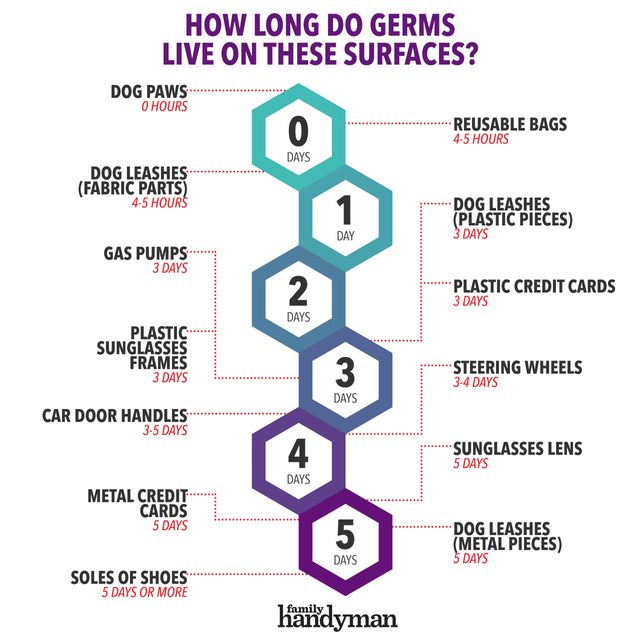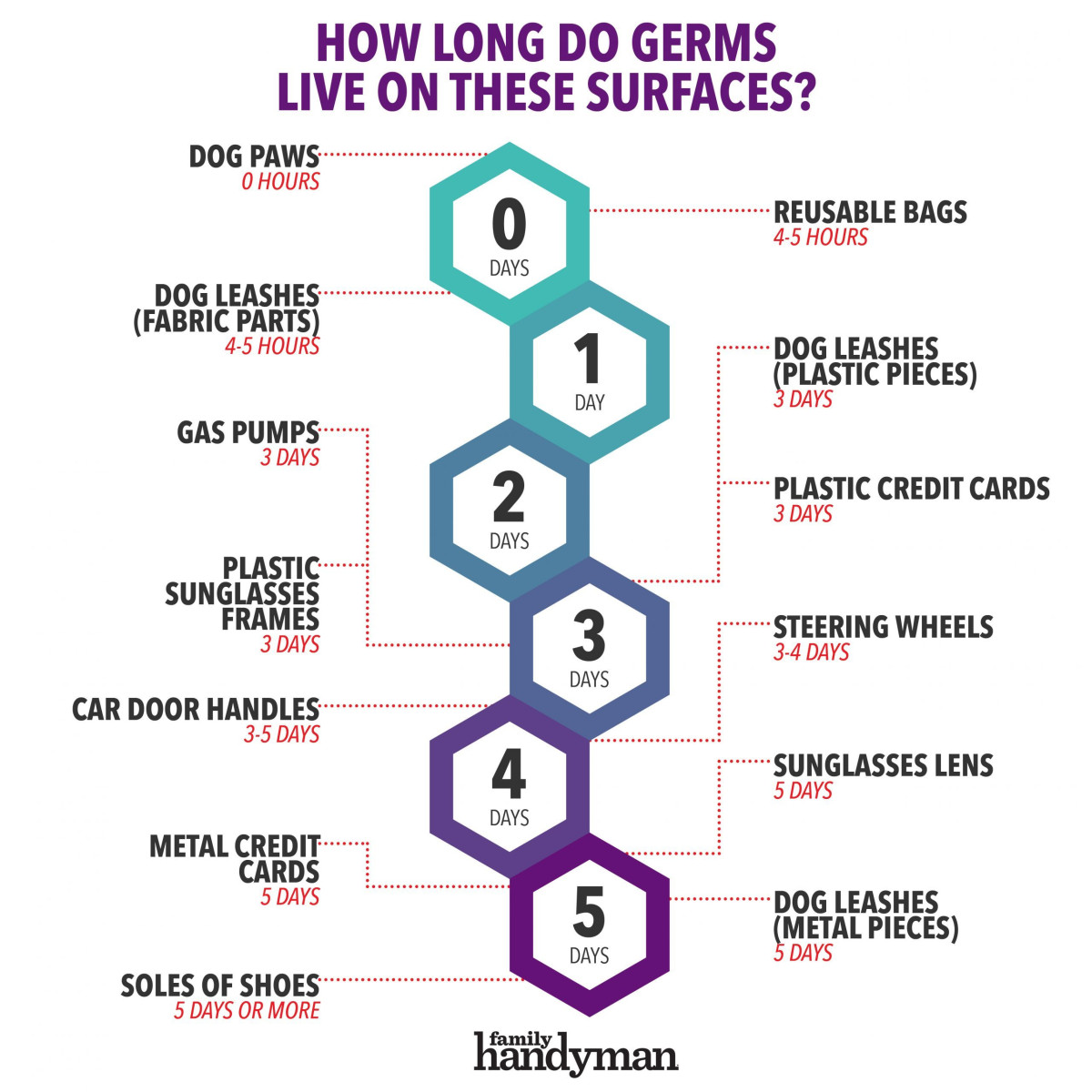Last Updated on 1 year by Francis
When it comes to the safety and sanitary practices of our homes and businesses, it is essential to understand the potential risks of bacteria such as E. coli. While E. coli is typically found in the intestines of people and animals, it can also be present in food and water, and even on surfaces. So, how long can E. coli survive on surfaces? Read on to find out more about the duration of E. coli on surfaces and the importance of proper sanitation and disinfection.
E.coli can survive on surfaces for up to 48 hours. The survival time depends on the type of surface, the temperature, and the amount of moisture. Cleaning and disinfecting surfaces can help reduce the number of E.coli bacteria present. Hot water, detergent, and bleach are effective cleaning and disinfecting agents.

Contents
How Long Can E Coli Survive on Surfaces?
E. coli, or Escherichia coli, is a type of bacteria commonly found in the human intestine. It is usually harmless and can even be beneficial, but it can cause serious illness if it gets into food or water. Knowing how long E. coli can survive on surfaces is important for preventing food contamination and other illnesses.
Factors Affecting E Coli Survival
The survival of E. coli on surfaces depends on several factors, including the temperature, moisture, and pH of the environment. In general, E. coli is more likely to survive for longer periods of time in warm and moist environments. Additionally, surfaces with a neutral or slightly acidic pH are more likely to support the growth of E. coli.
In addition to environmental factors, the type of surface on which the E. coli is found can also have an effect on its survival. Generally, hard surfaces such as stainless steel and plastic are more difficult for E. coli to survive on than softer surfaces such as cloth or wood.
E Coli Survival Time on Surfaces
The survival time of E. coli on surfaces can vary greatly depending on the factors mentioned above. Generally, E. coli can survive on surfaces for anywhere from several hours to several days. In the right conditions, the bacteria can survive for up to two weeks.
It is important to note that E. coli is not the only type of bacteria that can survive on surfaces. Other types of bacteria, such as Salmonella and Staphylococcus, can also survive for extended periods of time.
Preventing the Spread of E Coli
The best way to prevent the spread of E. coli on surfaces is to practice good hygiene. This includes washing hands thoroughly with soap and water after using the restroom, handling raw foods, and before preparing food. Additionally, it is important to keep surfaces clean by wiping them down with a disinfectant or hot water and soap.
Effects of E Coli Contamination
E. coli contamination can lead to a variety of illnesses, including diarrhea, vomiting, and fever. In severe cases, it can even lead to kidney failure and death. Therefore, it is important to take steps to prevent the spread of E. coli on surfaces.
Testing for E Coli
In some cases, it may be necessary to test for the presence of E. coli on surfaces. This can be done using special kits that allow for the detection of E. coli on surfaces. These kits are available at most stores that sell cleaning supplies.
Conclusion
E. coli can survive on surfaces for extended periods of time depending on the environment and type of surface. Therefore, it is important to practice good hygiene and clean surfaces regularly to prevent the spread of E. coli and other illnesses. Additionally, it may be necessary to test for E. coli on surfaces using special kits.
Few Frequently Asked Questions
1. How Long Does E Coli Last on Surfaces?
Answer: E. coli is capable of surviving on hard surfaces for up to 8 weeks. It is a type of bacterium found in the intestines of humans and other warm-blooded animals, and it can be spread through contact with infected surfaces. It is highly resistant to most cleaning agents, and it can survive in a variety of temperatures. E. coli can survive particularly long in cold and dry environments, such as in a refrigerator. Therefore, it is important to thoroughly clean surfaces that may have been exposed to E. coli, using a strong disinfectant and warm water.
2. How Can E Coli Survive on Surfaces?
Answer: E. coli can survive on surfaces due to its ability to form biofilms. A biofilm is a protective layer of polysaccharides and proteins that coats the E. coli cells and protects them from environmental stressors. The biofilm allows the bacteria to remain on surfaces for extended periods of time, making it difficult to remove. Additionally, E. coli can survive due to its resistance to most cleaning agents and its ability to form spores when conditions become unfavorable.
3. What Are the Dangers of E Coli on Surfaces?
Answer: E. coli can be dangerous when present on surfaces, as it is highly contagious and can cause a variety of symptoms and illnesses. The most common symptoms of E. coli poisoning include nausea, vomiting, and abdominal cramps. In severe cases, it can lead to kidney failure or even death. Additionally, E. coli can spread quickly if not adequately disinfected, so it is important to take proper precautions when cleaning surfaces that may have been exposed to E. coli.
4. What Are Some Ways to Protect Against E Coli on Surfaces?
Answer: The best way to protect against E. coli on surfaces is to practice good hygiene and use disinfectants. It is important to wash your hands regularly with soap and water, and to clean and disinfect surfaces that may have come into contact with E. coli. Additionally, it is important to use a strong disinfectant and warm water when cleaning surfaces, as this will help to kill the bacteria.
5. What Is the Difference Between Cleaning and Disinfecting?
Answer: Cleaning and disinfecting are two different processes. Cleaning is the process of removing dirt, dust, and other debris from a surface. This is usually done with soap and water. Disinfecting involves using a chemical agent to kill bacteria, such as E. coli. This is usually done with a strong disinfectant and warm water.
6. What Is the Difference Between E Coli and Salmonella?
Answer: E. coli and Salmonella are both types of bacteria, but they are very different. E. coli is found in the intestines of humans and other warm-blooded animals, and it can be spread through contact with infected surfaces. Salmonella, on the other hand, is found in animal waste and can be spread through contact with contaminated foods or surfaces. Additionally, E. coli is more resistant to cleaning agents than Salmonella, and it can survive for much longer on surfaces.
What is E.Coli? What can you do to protect yourself and others?
In conclusion, E. coli can last on surfaces for varying lengths of time depending on the type of surface and the environment. In general, E. coli can last from a few hours to several days on surfaces such as stainless steel, plastic, and glass. Other factors such as temperature, humidity, and cleaning method can also affect how long E. coli remains viable on a surface. It is important to practice proper hygiene and follow recommended disinfection techniques to reduce the risk of E. coli contamination.




.jpg)



